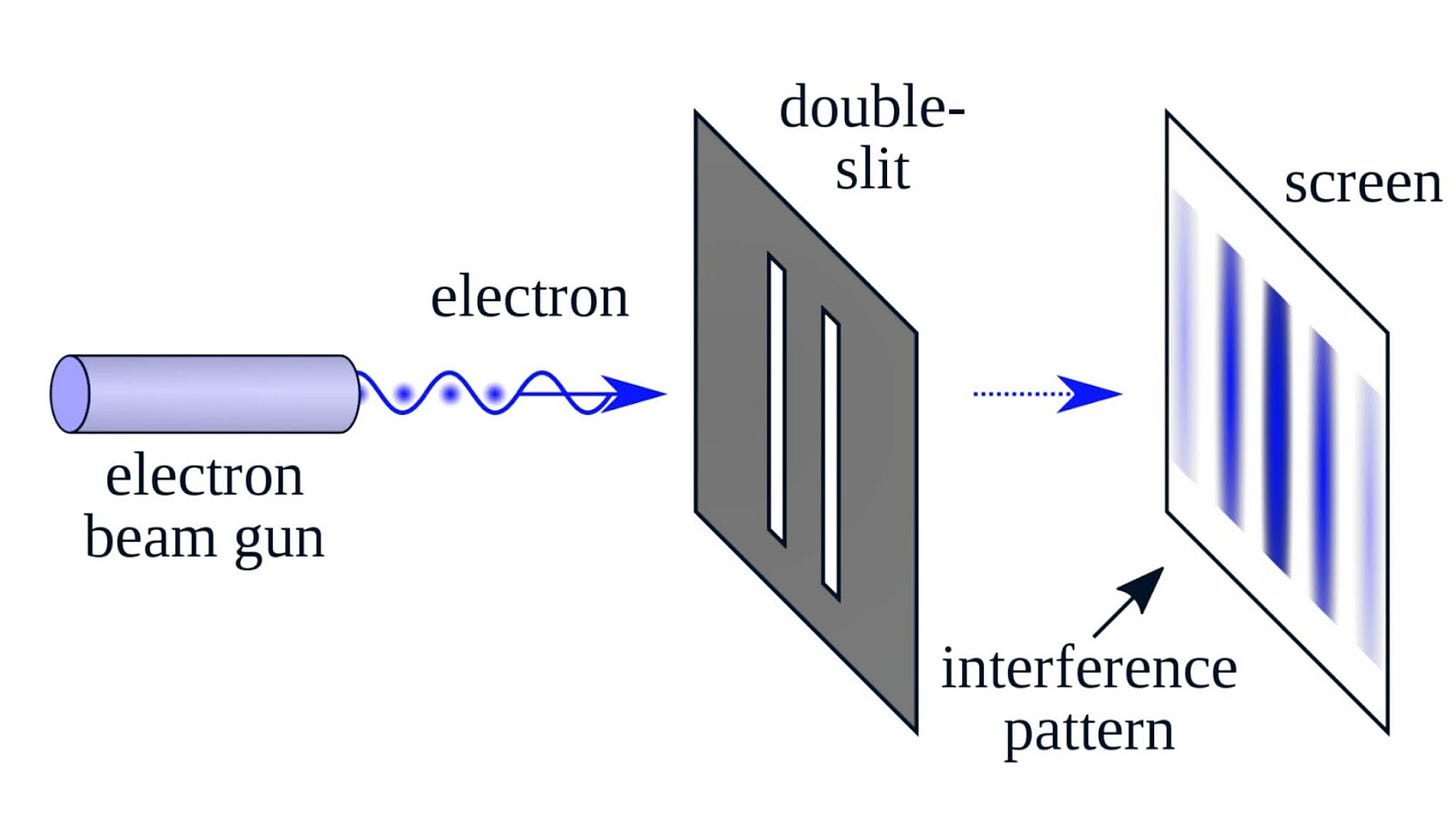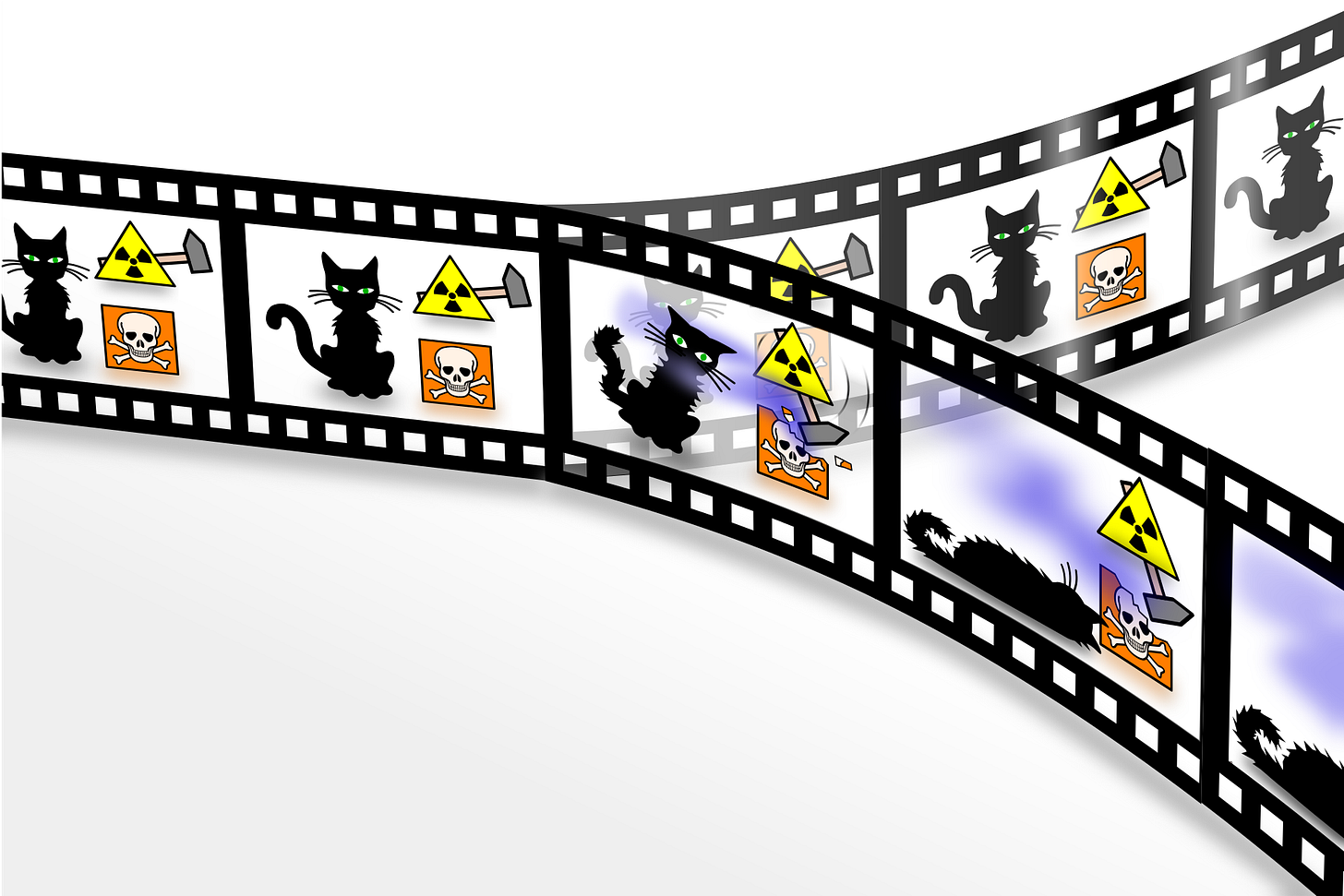
Imagine you are stuck in a room with a gun pointed at your head.
The gun's trigger mechanism is based on the state of an electron. Every 2 seconds the spin of the electron is measured; if the spin is +1/2 (clockwise) the gun does not fire; if the spin is -1/2 (anticlockwise) the gun fires and you die (rip).
Quantum immortality presents a scenario where the gun will not fire even after 100 attempts and you will survive.
How is this possible? Due to the existence of multiverses.
To understand quantum immortality we first need to understand some fundamentals of quantum mechanics.
Although we see and study electrons as particles, they actually behave both like waves & particles. In the double slit experiment, electrons produce interference patterns similar to those of light, demonstrating their wave nature while acting as particles when observed.

Quantum particles exist in all possible states (both wave and particle, both spinning clockwise and anti-clockwise) until they are observed when they display only one of the possible states. This is known as quantum superposition.
The Copenhagen Interpretation explains this by suggesting that at the moment of observation, the wavefunction of the quantum particle collapses to give a single value. This is also where the infamous Schrodinger’s Cat thought experiment comes in.
In Schrödinger's original formulation, a cat, a flask of poison, and a radioactive source are placed in a sealed box. If an internal monitor (e.g. a Geiger counter) detects radioactivity (i.e. a single atom decaying), the flask is shattered, releasing the poison, which kills the cat.
Since the decay of an atom is a quantum event, when the box is sealed, the atom is in all possible states simultaneously (decayed and undecayed), thus, the cat is both dead *and* alive. This is until we choose to open the box at which point, the cat will be either dead *or* alive (ie., the wavefunction has collapsed upon observation to give a single value).
But there is a competing theory that challenges the Copenhagen Interpretation.
Hugh Everett's Many Worlds Interpretation hypothesizes that each time a quantum event occurs, the universe divides into parallel universes where each of the potential outcomes are realized.
This is the multiverse theory, which suggests that there may be many universes like ours where the quantum state was seen differently and all the variances that were subsequently produced as a result of that. This interpretation states that although the cat may be dead in our reality when we open Schrodinger's box, the cat will be alive in a different universe.

Thus, under the many worlds hypothesis, each time the electron's spin is measured the universe splits into 2, one in which the spin is clockwise and you survive and the one in which the gun fires. Since you are dead in all the other alternate universes the only universe you can exist in is the current one where you survive. Your odds of surviving are 50% the first time the spin of an electron is detected, 25% the second, 12.5% the third, 6.25% the fourth, and so on. The likelihood of survival after 25 trials is merely 0.00003 percent yet there will always be one universe where you will survive, effectively rendering you immortal.
The theory of quantum immortality was first proposed by Max Tegmark, a professor in the Department of Physics at MIT. He proposed that survival in such a situation of “quantum suicide” could be a possible proof of the many worlds interpretation.
Note that this theory does not grant humans immortality by preventing aging and natural death. We will discuss that possibility in a future post.


